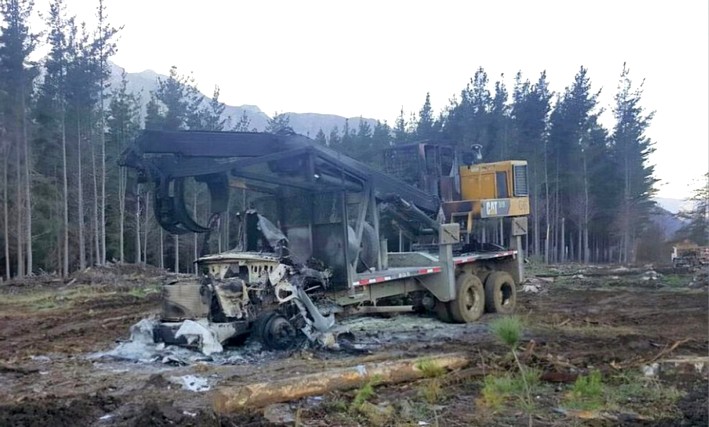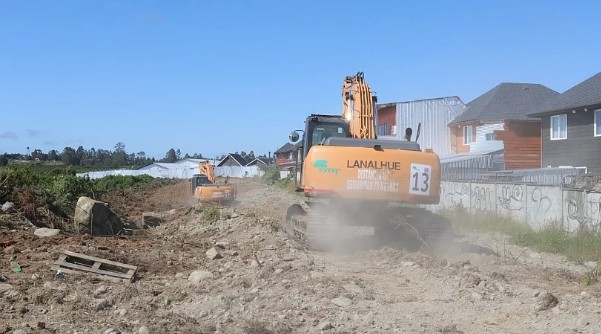UdeC Doubles Measures to Prevent Emergencies Ahead of 2024-2025 Wildfire Season
Through the implementation of new measures, the university is taking action to ensure the protection of its community and the surrounding natural environment.
With the upcoming summer and rising temperatures, the University of Concepción has intensified its efforts to address the growing risk of wildfires, a recurring threat in the Biobío region. Through its Services Directorate, the university is implementing a series of preventive and emergency response actions aimed at safeguarding both its academic community and the valuable ecosystems surrounding the campus.
UdeC has been managing a comprehensive wildfire protection plan for several years. Evelyn Vásquez Salazar, Director of UdeC Services, stated that this plan has evolved and strengthened in recent years due to the increase in wildfires.
"This risk has been included in our institutional risk matrix, given the potential impact of a wildfire spreading to the campus, our neighbors, and the Campus Naturaleza project," said the department head, adding that the plan has the full support of the Corporation's Board.
Juan Emilio Espinoza Carvajal, the University's Property and Forest Management Officer, highlighted the importance of the current climate situation, which has led to an increase in extreme wildfires both in Chile and globally. "For the 2024-2025 season, we are working to double the number of preventive measures, from 14 to 28, due to the climate contingency and high intentionality in our region," he explained.
Among the new measures to reinforce wildfire prevention and response strategies are increased aerial and ground patrols, improved water source availability, and the strengthening of the Forest Brigade with more equipment and training, ensuring better emergency preparedness.
Additionally, initiatives promoting collaboration with the community and institutions have been introduced. Regular meetings with neighbors have been implemented to align preventive actions and enhance joint efforts. The reduction of flammable materials in critical campus areas has also been prioritized.
One of the pillars of UdeC's strategy is the use of advanced technologies for early wildfire detection. The Property and Forest Management Officer detailed that the University maintains collaborations with public and private organizations to install AI-powered cameras that enable early fire identification through smoke-detection algorithms.
"Today, these collaborative efforts are essential in combating wildfires," said Juan Emilio Espinoza, also noting the 25-kilometer monitoring range that covers not only University properties but also nearby areas like Los Lirios and Cerro Caracol.
Technology is further utilized in continuous monitoring via drones and Geographic Information Systems (GIS), complementing real-time prevention and surveillance tasks. Espinoza emphasized that technological tools have been key for UdeC's Forest Brigade, which operates swiftly and precisely during emergencies.
The brigade has been a valuable asset in wildfire prevention and response. Composed of seven trained members equipped with drones and a water tanker, the team specializes in responding within the first minutes of a fire.
"This brigade has played a crucial role in both prevention and response, resulting in nearly 1,000 days without wildfires on university grounds," explained the Property and Forest Management Officer.
One of the key preventive approaches, he added, has been reducing flammable materials in critical areas through weeding and controlled logging, actions carried out annually to minimize fire spread risks.
Protecting Campus Naturaleza
The UdeC Campus Naturaleza Project, led by Dr. Cristian Echeverría Leal from the Faculty of Forestry Sciences, has also been an ally in these strategies. The professor stressed that prevention measures align directly with the project's conservation goals, focusing on high-biodiversity areas.
"Ravines, native moist vegetation, hills, and waterways create a more heterogeneous landscape that helps reduce fire spread," he noted, highlighting the advantage of native ecosystems over exotic species plantations like eucalyptus.
"What Campus Naturaleza offers is a diversity of ecosystems and environments, which helps mitigate fire spread in case of an outbreak," added the academic.
Campus Naturaleza not only focuses on wildfire prevention but also on the conservation and restoration of ecosystems surrounding UdeC's campus. This initiative covers over 180 hectares, protecting one of the last remnants of deciduous forest in Concepción.
According to Dr. Cristian Echeverría, conserving these ecosystems is crucial, as they provide vital ecosystem services like temperature regulation and air purification, which are essential in the context of climate change.

















